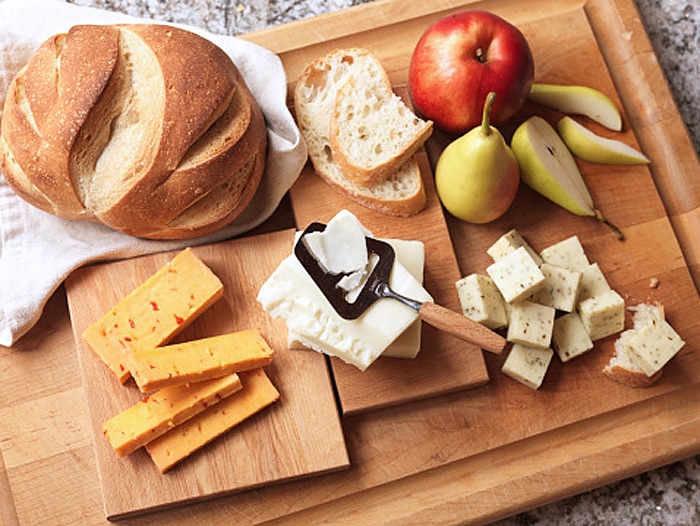
Written By: Gloria Tsang, RD
Title: Founding Registered Dietitian
Alumni: University of British Columbia
Last Updated on:

Now that the kids have been back in school for a little while, your lunchbox routine may be wearing a little thin. It’s time to start thinking about new, healthy snacks to tuck into their backpacks. One great option is cheese, since it’s packed with calcium and protein and, unlike many snacks targeted at kids, it has no added sugar.
Many cheese producers offer convenient pre-packaged cheese snack products that are perfect for grab-and-go snacking, and will survive a few hours in a locker or desk at school. So how do you know which ones are right for your kids? The scary truth is that while some packaged cheese snacks are essentially made of conveniently packaged natural cheese, others are loaded with sodium and have surprising low amounts of calcium for a dairy product.
We took a look at the offerings from some of the top brands to find the best and worst picks for calcium, low sodium, and natural ingredient list. Here’s what we found:

Table of Contents
The best choices for the most calcium are Cabot Seriously Snacking Sharp Cheddar and 50% Reduced Fat Cheddar, both at 15% of the recommended daily value of calcium per 21g, and Horizon Organic Mozzarella Cheese Sticks, with 20% of the daily value per 28g serving. These thee cheeses all offer the same healthy dose of calcium per gram, with the Horizon Cheese Sticks offering a larger serving.
Most of the cheese snacks we looked at clocked in around 15-20% of the recommended daily value of calcium per serving. We picked the ones above as the winners because they also outshine the other products in other categories. But for calcium, there is one clear loser. Somehow, Laughing Cow Original Creamy Swiss manages to have only half the calcium of the other cheese products – only 8% of the daily recommended value.
One other note: On the nutrition facts panel, Kraft Singles show 25% of the recommended daily value of calcium per 21 g serving – more than our winning picks. But a closer inspection of the ingredient list shows that calcium phosphate is added and probably boosts the calcium level artificially.
Our pick for a low-sodium cheese snack is Cabot Seriously Snacking Sharp Cheddar, with 130mg of sodium per 21g serving.
Once again, this is a category with a very clear loser. With a whopping 250g of sodium per 21g serving, Kraft Singles are not a good pick for those looking to keep their sodium levels in check.
Cheese only requires four ingredients: milk, salt, bacterial culture, and microbial enzymes. Our three winners stick to this list, with nothing extra added. Our winners are Mini Babybel Original, Cabot Seriously Snacking Sharp Cheddar, and Horizon Organic Mozzarella Cheese Sticks.
Most of the other cheese snacks we looked at had only one or two additional ingredients. But Kraft Singles have an incredible 14 ingredients!
If you’re looking to incorporate more organic products into your kid’s lunchbox, you can even find organic cheese snacks. Horizon Valley Organic Mozzarella Cheese Sticks and Organic Valley Stringles are both good organic options with high calcium and a short ingredient list, although the Stringles are a little high in sodium (210mg per 21g serving)
Nutritionally, cheese beats many other snacks targeted at kids hands-down – and it’s a great snack for grown-up kids, too. The packaged cheese products we looked at here offer convenience and kid-friendly packaging, but if you’re concerned about the extra ingredients some of them contain, you can always just buy blocks of natural cheese and cut it into cubes so you have custom cheese snacks ready to go at any time.
Alumni: University of British Columbia – Gloria Tsang is the author of 6 books and the founder of HealthCastle.com, the largest online nutrition network run by registered dietitians. Her work has appeared in major national publications, and she is a regularly featured nutrition expert for media outlets across the country. The Huffington Post named her one of its Top 20 Nutrition Experts on Twitter. Gloria’s articles have appeared on various media such as Reuters, NBC & ABC affiliates, The Chicago Sun-Times, Reader’s Digest Canada, iVillage and USA Today.
cheese, healthy snacks, kid's nutrition